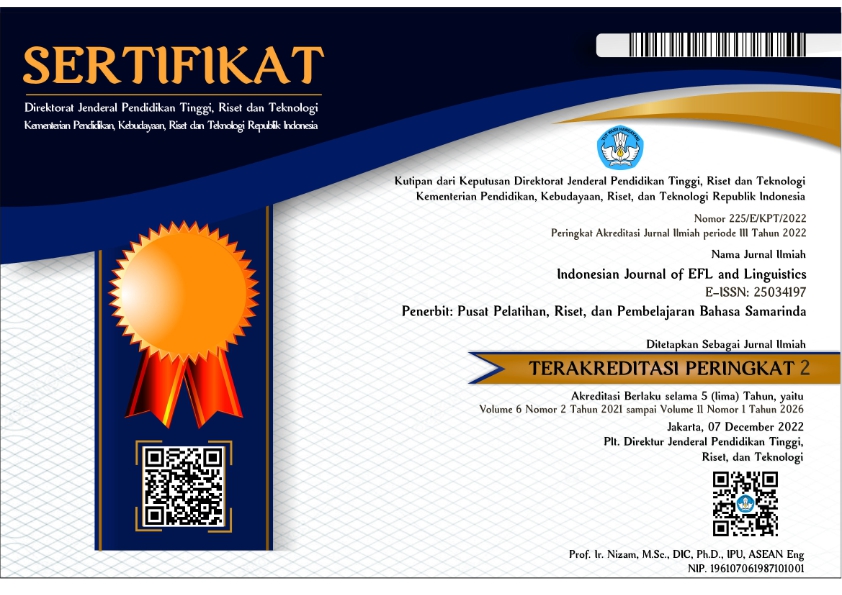Counter-Speech On Israel-Hamas Conflict News Comments
Abstract
Israel-Hamas conflict has been a worldwide issue and its news on social media raised various responses on the comment section. Counter-speech comments are found on Instagram in most of hate speech comments. The study aimed to determine the types of counter-speech`s exchanges and its strategy found on Instagram comment section towards Israel and Hamas conflict news also to investigate the perceptions of social group about Israel and Hamas. Campbell Kathrin's (2010) theory used to examine respondents' views based on social assessment and social identification and Susan's (2016) framework to classify counter-speech interactions and tactics/strategy used. Documentary was used by selecting the suitable data on BBC Instagram account`s comments which were counter-speech written in English and interview were done to seven respondents as Instagram users from Indonesia with the age category of 18 to 34 years. The result shows that: (1) two exchanges type of counter-speech used in the comment section conflict namely One-to-One and One-to-Many are commonly used in Instagram as its features support; (2) the counter-speech comment contained all strategy that was dominantly used Pointing Out Hypocrisy or Contradictions and Presentation of Facts to Correct Misstatements or Misperceptions; and (3) social identification plays a role in the perspective or interpretation especially Racial and Ethnic Identification while social evaluation is more impactful to the use of word choice or diction.
Copyright (c) 2025 Indonesian Journal of EFL and Linguistics

This work is licensed under a Creative Commons Attribution-NonCommercial-ShareAlike 4.0 International License.




